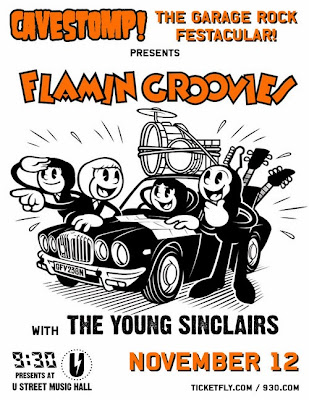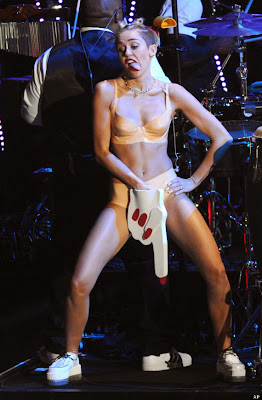Feeling like I'm ten feet tall
You know I'm not the same old man
As you may know, the month of January -- which begins tomorrow -- got its name from Janus, the Roman god of beginnings and transitions.
Janus is always depicted as having two faces -- one looking backward into the past, and one looking forward into the future.
 |
| Janus |
Keep Janus in mind as you read the final 2 or 3 lines post of 2013 and the first post of 2014, which will appear in a few days.
* * * * *
The starting point for 2 or 3 lines way back in 2009 was a local radio show called "The Mystic Eyes."
That show has been off the air for over 30 years, but it continues to play a major role in not only the life of 2 or 3 lines, but also in my life. It's my personal equivalent of Charles Swann's madeleines.
In fact, the most significant music-related event of 2013 for me took place as a direct result of my recording many hours of "The Mystic Eyes" program in 1980.
One of the songs that was featured regularly on that program was "Washingtron," by Tru Fax and the Insaniacs, a local band that was at the height of its popularity then.
"Washingtron" quickly became a favorite of mine thanks to the very clever lyrics, including these:
I used to work as a waitron
In the lounge of the Hiltron
Now I work for my Senatron
And I live in Arlingtron
I'm just a Washingtron
I featured "Washingtron" on this blog on May 9, 2010. Here's a link to that post.
The day after that post appeared, Michael Mariotte -- the Tru Fax drummer -- posted a link to 2 or 3 lines on the band's Facebook page, and wrote this comment: "New blog posting on Tru Fax; not sure who these people are, but it's an entertaining blog."
That post attracted the attention of another blogger who arranged for a friend to digitize the dozens of "Mystics Eyes" cassette tapes I had recorded in 1980.
I also got an e-mail from Lynda Cokinos, whose "DC Rocks" blog is an invaluable resource for people who want to keep up with the Washington-area live music scene. Lynda, who had also heard about my "Washingtron" post from Michael Mariotte, congratulated me on my "cool" blog and alerted me to the existence of hers. Here's a link to "DC Rocks."
* * * * *
Fast forward to November 4, 2013. The "DC Rocks" post that day was about an upcoming Washington appearance of the Flamin' Groovies, one of my favorite bands ever.
As you more dedicated readers of 2 or 3 lines will recall, I hold "Shake Some Action" by the Flamin' Groovies in such high regard that I chose it to be the 500th song featured on my wildly popular blog.
Click here to read part one of that three-part post, which featured an interview with Groovies' frontman Chris Wilson and an appreciation by Joe Nolte of The Last (whose "She Don't Know Why I'm Here" was the very first song I ever wrote about for 2 or 3 lines). Click here to read part two. Click here to read part three.
Washington's 9:30 Club provided Lynda Cokinos with two free tickets to the Flamin' Groovies show, and Lynda's November 4 post offered to give those tickets away to a lucky reader of "DC Rocks." All you had to do was submit an e-mail with the word "GROOVY" in the subject box, and hope that you were the lucky fan whose name was drawn out of a hat.
Imagine my surprise when I found an e-mail from Lynda informing me that I had won the free ducats. Winner, winner, chicken dinner!
My karma has been exceptionally good recently. I would have gone to the show regardless, but winning free tickets made it seem like it was destined that I attend.
There was one slight complication. I had won two tickets, and it seemed a shame to waste the second one.
The only person in my family who would have any interest in the Flamin' Groovies was my oldest son, Nick. I had taken him to see the Offspring and Sonic Youth when he was a teenager, and he had taken me to a Mission of Burma show a few years ago. Unfortunately, he is a very busy young lawyer, and was going to be out of town on business the night of the Groovies' show.
 |
| Cyril Jordan (L) and Chris Wilson (R) of the Flamin' Groovies |
I thought about various friends and acquaintances who might have an interest in the Groovies, but there were no obvious choices.
Suddenly, I had a "Eureka!" moment. I would invite the lead singer/guitarist of Tru Fax and the Insaniacs, Diana Quinn, to the concert.
I honestly figured there was no way Diana would accept. After all, I had never met her -- I had never even spoken to her via e-mail -- and I assumed that an invitation from a total stranger coming out of the blue like this would be turned down or even ignored. (There I go assuming things again!)
Rejection wouldn't have been the worst thing in the world: even if she did say "No," I would have made her acquaintance and hopefully paved the way for a future 2 or 3 lines interview. (I go to incredible lengths for you, dear readers.)
However, Diana threw a big-ass spanner into the works by actually saying "Yes" to my invitation. My best-laid scheme had gang aft agley big time!
* * * * *
Fast forward once more -- this time to November 12, 2013.
The Groovies took the stage at the U Street Music Hall at about 8 pm. I came to the concert bearing gifts for Diana Quinn: a homemade CD with Flamin' Groovies music and a copy of the "Mystic Eyes Greatest Hits" cassette tape I had created 30 years previously -- which of course included "Washingtron."
Also in attendance at the concert that night was Steve Lorber, the "Mystic Eyes" DJ, and my benefactress -- Lynda Cokinos of "DC Rocks." Mark Noone -- the lead singer of the legendary DC punk-garage band, the Slickee Boys -- was there as well, as was Kim Kane, the Slickee Boys' guitarist.
I was agog at this extraordinary collection of local celebrities. But my excitement was offset by feelings of regret -- regret that I hadn't jumped into the Washington live music scene decades previously.
There was no excuse for my failure to launch. I worked at the Federal Trade Commission in 1980, and my office was only a few blocks from the 9:30 Club, which was ground zero for alternative music in your nation's capital in the eighties and early nineties.
I could have been there several nights a week, watching some truly great groups -- including touring bands like X, the Bangles, Hüsker Dü, the Butthole Surfers, the Go-Go's, and Black Flag, and local bands like Fugazi, Minor Threat, the Insect Surfers, the Urban Verbs, Tru Fax and the Insaniacs, and the Slickee Boys (who performed at the 9:30 no fewer than 81 times).
I would have shed a tear for my misspent youth, but I was having too good a time talking to Diana Quinn and all her musical friends and listening to the fabulous music of the Chris Wilson-era Flamin' Groovies -- which one reviewer has described as the only group other than the Beach Boys who were playing sixties-sounding pop music in the seventies.
After the Groovies closed the show with a spirited rendition of "Shake Some Action," we hung around until Cyril Jordan (the band's co-founder and guitarist) and Chris Wilson (the group's longtime lead singer) came out from their dressing room to sign autographs and greet their fans.
 |
| Flamin' Groovies frontman Chris Wilson with yours truly |
Chris greeted me enthusiastically, and said some very kind things about my interview with him.
I then complimented him on the Groovies' cover of the Rolling Stones' "Jumpin' Jack Flash." Some know-it-all fan jumped in to our conversation and told Chris that he had heard that song had been inspired by a particular London street musician, but Chris corrected him -- prefacing his explanation with these words: "Actually, my buddy Keith Richards told me that . . . ."
I stopped listening to his explanation at that point -- the realization that I was one degree of separation from Keith Richards was too overwhelming for me to handle.
All in all, the evening was great. Diana was as much fun as a barrel of monkeys, which may have been due in large part to the fact that she pounded down at least five beers in about two hours. (I only had three beers during the evening. To be fair, I was drinking Belgian-style ales, which had a lot more alcohol than the light beers she favored. On the other hand, I weighed twice as much as she did, so I should have been able to absorb a lot more beer than Diana without showing the effects.)
 |
| Diana Quinn with beer in hand (as usual) |
All the beer was largely responsible for us getting completely lost going home on the Washington Metro after the show. But there were factors other than alcohol contributing to our long and winding subway odyssey -- primarily my tendency to assume too much. And as everyone knows, when you assume, you make an ass out of u and me.
One thing I assumed that evening was that Diana was a regular Metro rider, and that she would know what train to take to get home. But I was sadly mistaken.
You see, Diana performs regularly in three different bands, and is also a producer/writer for CBS News. So she is kind of a big deal.
Diana is such a big deal, in fact, that she apparently never rides the subway like we hoi polloi do. Perhaps she just keeps a big stack of fifties in her purse that she dispenses promiscuously to the Washington cab drivers who service her transportation needs. Or maybe she has a limo, or a helicopter.
Whatever the reason, she followed me on to a subway train that was going in exactly the opposite direction from her destination with nary a protest. And as my 8th-grade government teacher used to say, "When the blind lead the blind, we all go into the ditch together."
Eventually I managed to get Diana on the right train. Sometime after that, I managed to get myself on the right subway line as well -- barely making the last Metro train of the evening.
As Shakespeare once said, all's well that ends well. But all would have been even weller if it had ended a couple of hours earlier.
I subsequently interviewed Diana Quinn, and you'll be able to read that interview in the first 2 or 3 lines of 2014. [NOTE: Due to circumstances beyond my control, the Diana Quinn interview actually appeared in the second 2 or 3 lines of 2014.]
"Yes I Am" was released on Jumpin' in the Night, the second of three Groovies albums that were released by Sire Records in the late 1970s.
Those albums contain a number of fabulous British invasion-style songs, and it wasn't easy to choose to feature in this post. But "Yes I Am" is not only a great song but also was one of the songs the band performed live the night I saw them. That sort of clinched the deal.
Here's "Yes I Am":
Click here if you'd like he song from Amazon:


































